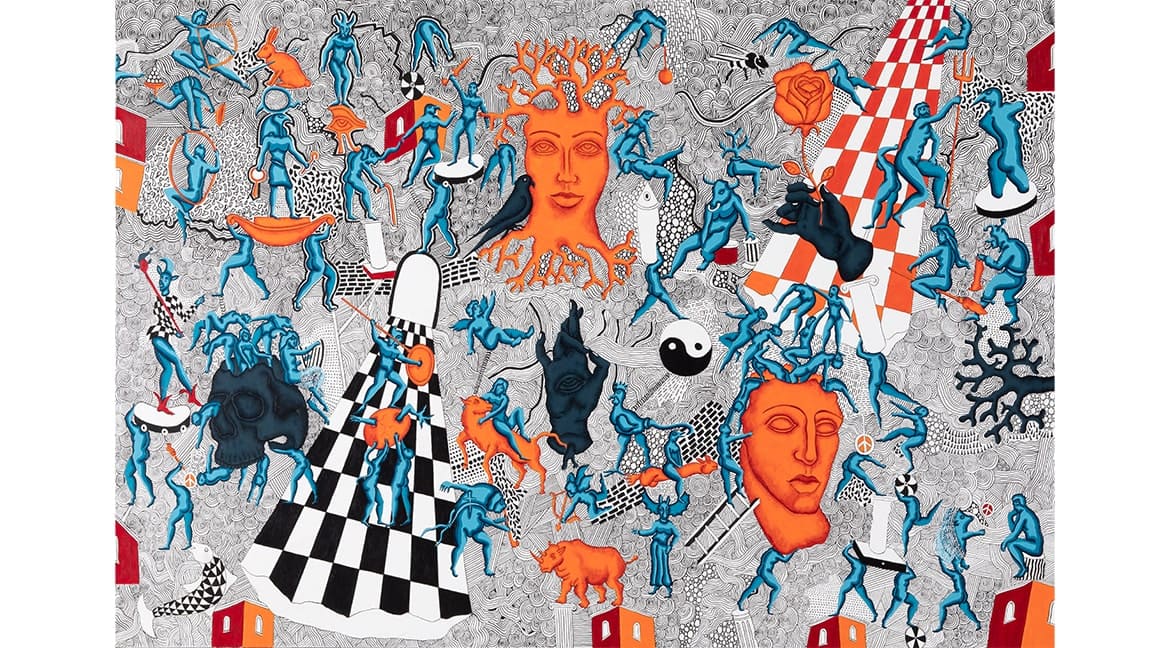
Id Series
Is mankind historical or universal? Is a human being made of experiences acquired during a lifetime, or is s/he born with an accumulated past and an immutable substance embedded in his/her genetic codes? Necmi Gürseler’s answers to these questions through his paintings show that the artist in search of a spiritual essence. This essence is the “id”. While accepting relativity and spiritual evolution, he wishes to draw a limit to them and tries to disassemble the constructed psychology of post / modern man, starting from the premodern period. For Gürseler, when artificial constructions of the modern and postmodern periods are removed, what remains is the universal origins of the essence possessed by human beings. For him, no matter how much personal experiences transform, no matter how post / modernization veils, there is an unconscious, independent of its own consciousness and common with the entire humanity that resists rationality, and that can be expressed only through mythological narratives. This collective unconscious is reflected on all the decisions of the person, regardless of which history or geography s/he is in. What looks dangerous to Gürseler is that the id, which is the ground for collective unconscious in its roots, is tamed by modernity and then postmodernity to an extent that no trace is left behind. He stands against the cultural seen as fiction, swallowing the primitive that he regards as original / natural: One must shift from Artificial to the Essence. But what is the essence? Collective unconscious is invisible, it cannot be touched ordescribed. It’s a feeling. Gürseler focuses not on what collective unconscious is, but what it would look like if it could be seen. The feeling of the essence, that is the id, can only be reproduced through symbols and this can be extended to a generated common meaning. Gürseler has to rely on some familiar visuals in order to describe his narrative in a way that produces a common meaning. He chooses mythological signs as the most appropriate visuals for the id. Thus, Gürseler’s paintings are arranged by stories that rediscover / produce mythology, by figures that animate these stories, and by networks of meaning that convey these figures. These networks of meanings are not signs that enunciate the signification they emit, but rather symbols whose interpretability lasts forever. No visual stands in its place, all are equipped with possibilities of meaning beyond the one they reflect. This is a gateway of archetypes, a journey from the canvas into the human being, a guide to deep diving of what was never self-discovered before, in which each person can reveal different aspects through their own personal experiences; a collective unconscious archaeological excavation. By nature of their field of inquiry, these works are painted not with the conscious, but through the unconscious. There’s neither a sketch, nor a setup: Gürseler sits in front of his canvas and in the blink of an eye creates a narrative under the sway of lines. He portrays the collective unconscious through unconscious relationships that his own unconscious establishes with the collective. Gürseler’s painting is a relationship between various kinds of unconscious.
Yalın Alpay
